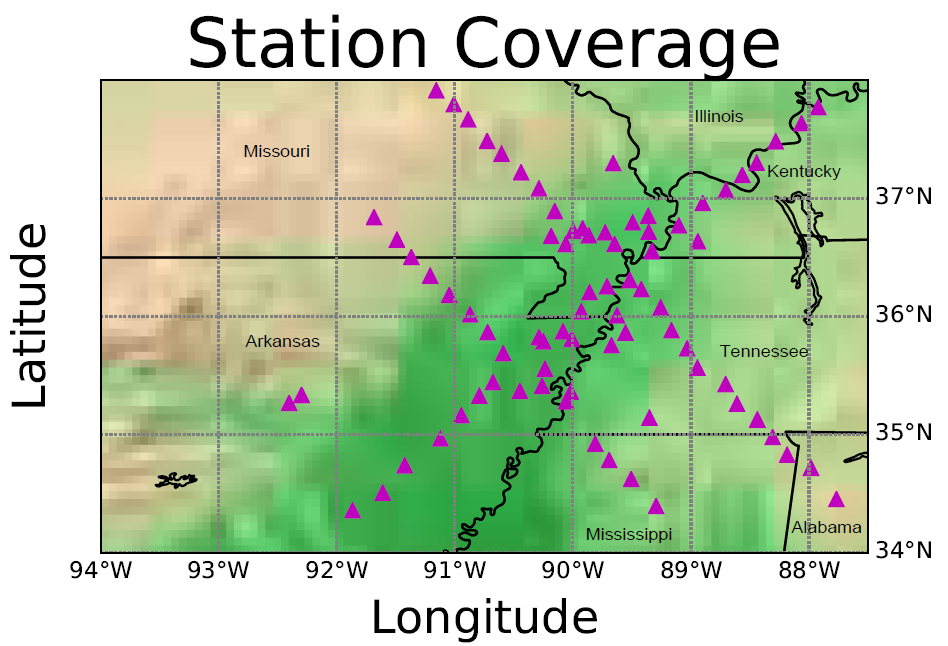Paige
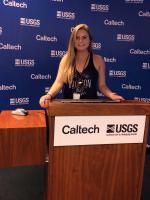
Paige is a student at University of Houston currently completing her research at Missouri University of Science and Technology under Dr. Kelly Liu.
I will be working with Dr. Kelly Liu at the Missouri University of Science and Technology on a summer research project that includes the analysis of shear wave splitting (SWS) to observe lithospheric structure. More specifically, we will focus on complex SWS which displays the characteristic that incoming waves with varying azimuthal angles display different SWS properties (i.e. azimuthal anisotropy). For SWS analysis, typically one will focus on what is referred to as XKS waves. These XKS waves can be a variety of wave combinations that transmit through the liquid outer core and emerge as S-waves, including SKS, PKS, and SKKS waves. Our project will encompass the entire research process from data collection, preprocessing, processing, analysis, results, and conclusion. Through this research opportunity, we will be able to conduct a SWS analysis that will allow us to gain a better understanding of lithospheric properties and dynamics and acquire quantifiable data representative of the local SWS properties, such as fast wave direction and splitting time.
Week 7!
July 25th, 2019
Wow, I can’t believe it's been 7 weeks already! As my time at MST is nearing its end, I can look back and reflect on various challenges I’ve faced and how I was able to overcome these challenges. Perhaps one of the biggest challenges this summer was dealing with computer issues, such as having to wait a couple weeks to gain access to the computer system and then having multiple issues with the computer cluster and processing code speed. For the former, I used this time to research and learn about shear-wave splitting. Since I did not previously have experience with shear-wave splitting, it was good to be able to take some time to learn more about the concept on my own time. The second issue was a little more challenging because it prevented me from being able to begin the manual checking process. However, I used this opportunity to brainstorm and look to my coding skills. Rather than using the code that runs all of the processing steps at once, I attempted to do the steps for each phase manually. This helped speed up the processing time and allowed me to start the manual checking process for certain phases while the algorithm was still running for the other phases. Now I am able to work on the manual checking process, so far I have been able to complete the checking for the PKS and SKS phase and have ¾ of the SKKS phase finished. It feels good to finally be able to hit the ground running. Hopefully in this next week I will be able to finish the manual checking process and start creating some figures and getting some results!!
On a fun note, these past couple weekends have been very exciting! Last weekend, Kate (the other IRIS Intern) and I visited Onondaga Cave State Park and toured one of the caverns there. It was a very cool experience because there were no lights set up in the cave. Instead, we were given heavy-duty flashlights to light our paths as we traveled through the cave and looked at landforms. This past weekend I took a trip to Jefferson City, the capital of Missouri. Although the Capitol building was under renovation and partially covered on the outside, I was still able to tour the downtown area and also check out the beautiful scenery surrounding the Capitol building and the Governor's Mansion.



Week 5!
July 8th, 2019
Happy late 4th of July!
My automated shear-wave splitting analysis code finished the first round of processing over the weekend so I’ll be able to move on to the next step. I’m hoping to be able to start the manual validation and selection process soon! Since the data is still in the processing phase, I don’t have any additional figures to share, but once I am able to manually check each station I will be able to post some interesting figures related to my project. For reference, you can find figures similar to those that my research will produce in the article “Making Reliable Shear-Wave Splitting Measurements” by Kelly Liu and Stephen Gao (2013). This article has been a crucial guide for me throughout my research, giving me a good understanding of the process because it outlines the shear-wave splitting analysis techniques that I am using and was co-authored by my mentor.
On a personal note, I was very excited to discover that a frozen yogurt shop in town recently started selling Bubble Tea! This was a refreshment I always looked forward to after a long hard day of school and/or research back home and was one of the things I’ve missed most when I couldn’t find one in Rolla. Getting a nice cup of bubble tea was exactly what I needed to wrap up my fifth week of research!
Citation:
Liu, K. H., & Gao, S. S. (2013). Making Reliable Shear-Wave Splitting Measurements. Bulletin of the Seismological Society of America, 103(5), 2680-2693. doi:10.1785/0120120355
Week 4!
June 28th, 2019
Week 4 went by so quickly! There were some challenges and successes this week! The first challenge was with the automatic processing algorithm. I noticed that a few events had run through very slowly and indicated they were “complete” but when I checked, there was no output data. After carefully reviewing the code, I discovered a small, single line had been deleted during an earlier troubleshooting revision of the code. When I reentered that line, the code ran perfectly which was a big success! The only other challenge now is waiting for the run time the processing code requires. The stations I am studying have a lot of data so it takes a longer computation time. For example, at this point I have processed 30 stations and already have over 165,000 SAC files in the SKS phase. This high volume of data does not account for the other phases or the remaining 50 events that have yet to be processed. With datasets this large, it takes a while to process, even using a computer cluster!
The figure below maps the station coverage in my study region. The triangles represent the location of each of the 80 stations I am studying. I used Python Jupyter Notebook to create this map. I also plan to make a study region map using GMT but will have to wait for my processing code to complete before I will be able to restart my computer and download the program.
This past week I also had a lot of fun adventures around Missouri! I visited the St. Louis Zoo, which was AMAZING! I also went to the Science Center and experienced the Pompeii Exhibit and saw the film on volcanoes that accompanied the exhibit. This was also very cool! Finally, I went to Maramec Spring Park, which is about 20 minutes from Rolla. This place was beautiful with bright blue water and lush green scenery! Oh, and I also saw otters in the water at Maramec Spring Park! This might not be a big deal to some but I don’t get to see otters in the wild in Houston so this was a big highlight for me! I have attached a couple photos of the zoo and Maramec Spring Park below.


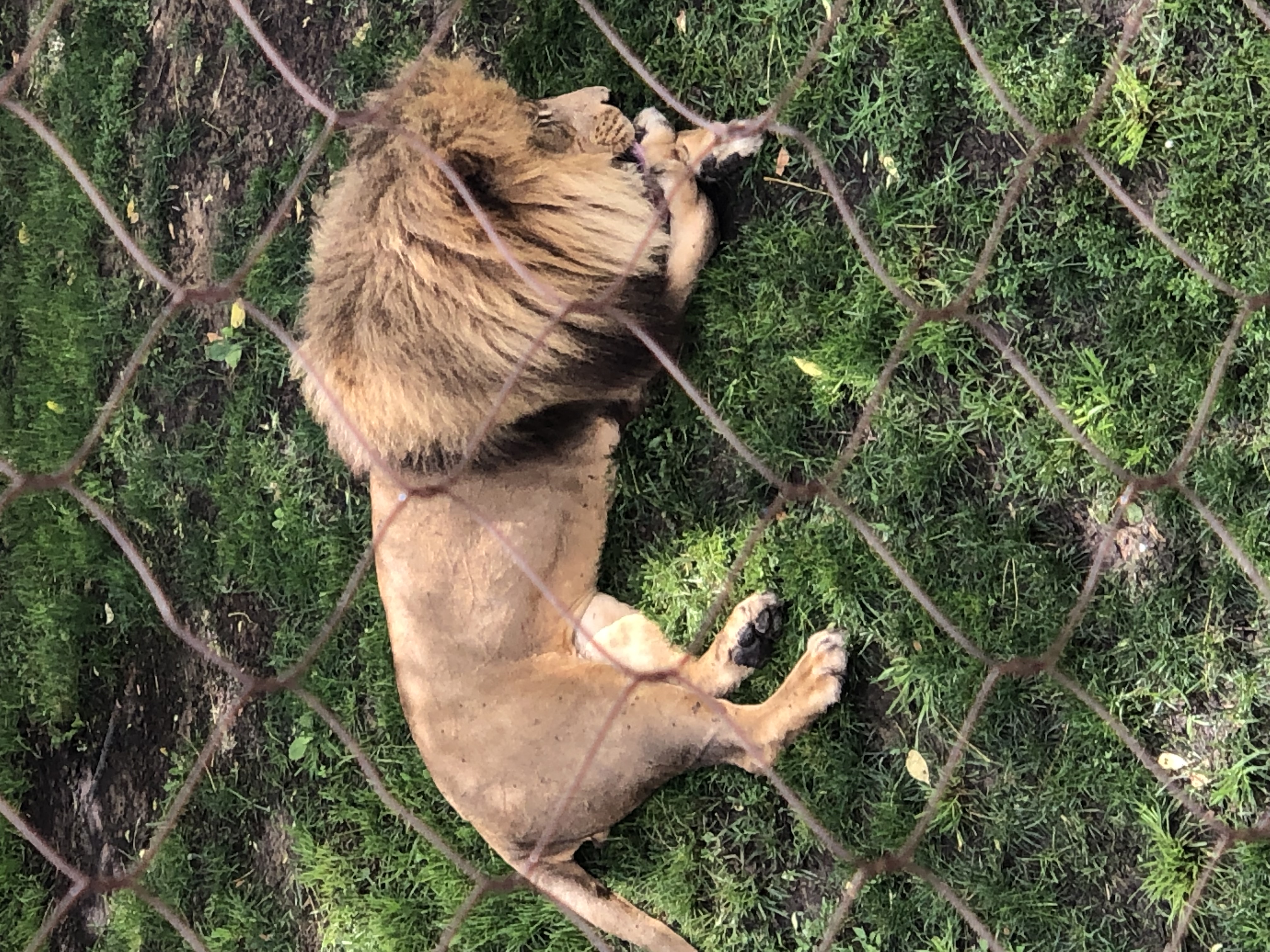
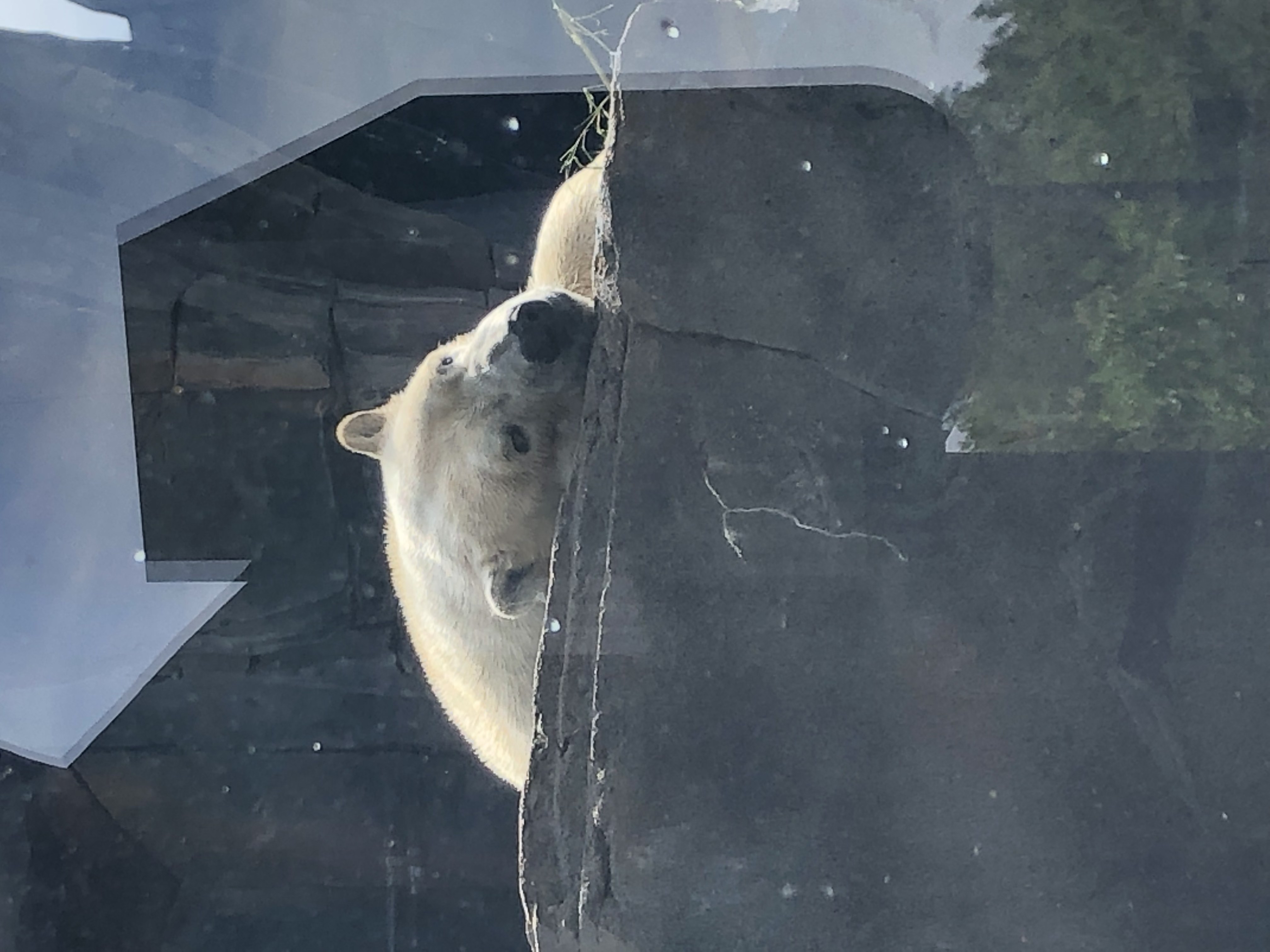
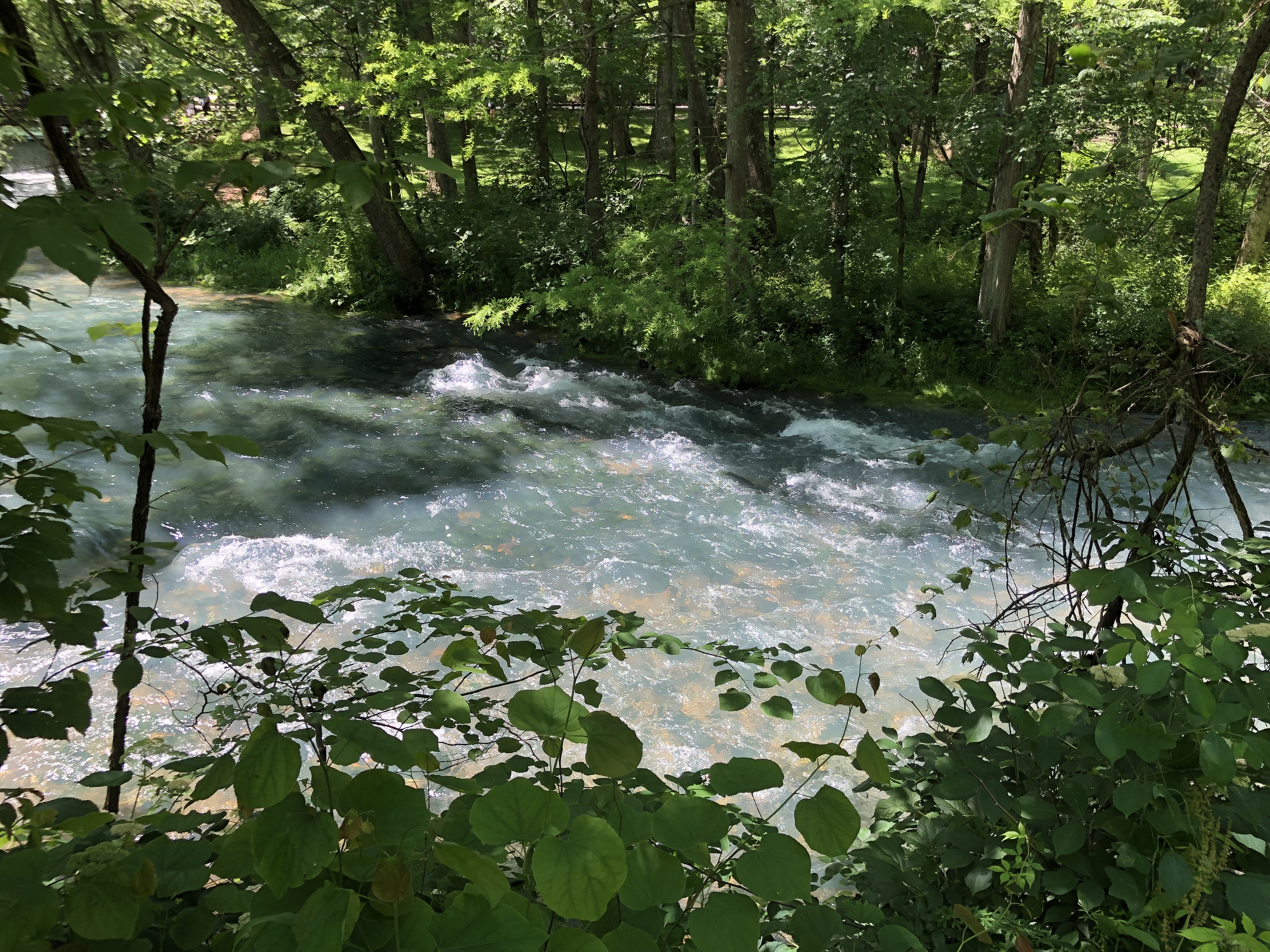
Week 3!
June 23rd, 2019
Week 3 at MST has officially come to an end! This week I was able to start downloading the data from IRIS and begin the processing step of my research. The SWS data is processed through an automatic algorithm and then manually checked, so while I waited for the initial processing to finish, I worked on other aspects of my research. I completed tutorials that focus on programs I will be using this summer, including Linux and GMT. I also created a map that displays my study region including station coverage, so that we can get a better idea for the distribution of our data.
Dr. Lui hosted a group lunch meeting with all the other researchers working on SWS, which was a great opportunity to get to know everyone better and learn about their study regions and where they are in their process. I even had the opportunity to check out the next step of my research, the manual checking process, from another student who is currently working on that stage of the research. It was very exciting to get an idea of what my future project work will look like!
This week we also worked on elevator speeches for our research. Elevator speeches are very useful at conferences so that you can explain your work quickly to other professionals, but it is also important to have one prepared for individuals who are not in your field. I found it slightly more challenging to figure out a way to describe shear-wave-splitting and particularly complex SWS to someone who has no knowledge of the geosciences at all. As I work further into this research, my elevator speech will expand and grow with the knowledge I’ve accumulated. This expanded version will be great for conferences, however, the original version will likely remain the best one to share with individuals who aren’t in my field.
Overall, this week was a very good one. Not only was it productive and energetic, I was able to meet other scientists in our lab, including Kate the other IRIS Intern based at MST, that are working on similar projects and make a few friends along the way!
Week 2!
June 14th, 2019
Today marks the end of the second week for me here at Missouri S&T. I spent the majority of last week and the first half of this week doing background research while the IT Team worked to grant me access to the computer system and the computer clusters here on campus. Over the past couple of days since having access, I have begun the data request and download process from IRIS. While the data is still in the process of downloading, I do not have any specifics or figures yet, but I can generally describe the region we will be looking at over the summer. My research will focus on an area which encompasses the lower region of Missouri, along with portions of surrounding states, and the New Madrid seismic zone. The coordinate range for this zone has been previously defined by Liu et. al. (2017). Once the data has finished downloading, I will be able to start the processing step of my research.
While at Orientation, we were provided a self-assessment rubric which allowed us to consider our proficiency in certain tasks and how they relate to our research, and then discuss these with our mentors. I believe one of the most important skills we develop is the ability to discuss our research with a high level of knowledge and confidence. This is a skill that will progress throughout the summer as I become more familiar with my research. While I currently have a general understanding of shear-wave-splitting, I know that the more I work on my research project, the more I’ll learn and the better I will become at communicating with academic colleagues. Having the ability to clearly portray your research allows you to share the knowledge you’ve acquired while also getting different perspectives from others in your field. It is an invaluable criterion for academic growth. Presenting my research at AGU will be a great way to practice and advance this skill!
Citation:
Liu, L., S. S. Gao, K. H. Liu, and K. Mickus (2017), Receiver function and gravity constraints on crustal structure and vertical movements of the Upper Mississippi Embayment and Ozark Uplift, J. Geophys. Res. Solid Earth, 122, doi:10.1002/2017JB014201.
Week 1 - Goals for the Summer
June 10th, 2019
Upon arrival in Rolla, Missouri at the Missouri University of Science and Technology, I have established many goals for this summer. I am very excited to have the opportunity to meet and work with my advisor, Dr. Kelly Liu, and learn more about a new aspect of seismology that I have not yet explored. I have both personal and professional goals for this summer. Focusing first on the personal goals, I would like to take this time and opportunity to explore the area around Rolla, Missouri and venture out to other areas, such as St. Louis. Everyone I have met so far has been very friendly, so I am looking forward to developing lifelong friendships and exploring Missouri with others as well! I have two main things I want to make sure I experience before I head back home at the end of this summer. First, I would like to visit Fugitive Beach, a quarry located near town that looks absolutely stunning in the photos with blue water (even though they admit that they add a little dye to the water to make it slightly more aesthetically pleasing than its natural appearance). The quarry has a large water slide, water obstacle course, and cliff jumping region that sounds very exciting. Secondly, I want to visit the St. Louis Zoo. They say a picture is worth a thousand words and if the photos of this zoo say anything it's that I need to go there! I love visiting zoos in different cities and regions across the country and I am excited to see some of the animals here that I have not seen before, like Polar Bears! Besides these personal goals, I also have my research goals. One of the first things I did as I began my research project this week was to create a rough-draft week-by-week agenda with large goals in mind. These weekly goals include tasks such as completing preliminary research through the use of scientific articles, determining a study region, collecting the data, and so-on throughout the research process. By setting these weekly goals in the beginning, I can confirm alignment with my mentor Dr. Lui as well as set the pace and better determine what and when steps need to be accomplished in order to produce substantial results over the summer. I also hope throughout this research experience to expand my coding skills. I believe I will be working primarily with MATLAB and Linux this summer, both of which I have some prior experience but there is always room to grow! Expanding my experience and knowledge of coding languages is very important to me as I find it extremely interesting and useful in seismological fields. I also hope to expand my network and networking skills throughout this program. I have already had the opportunity to meet with and discuss experiences with the other interns who are all amazing! I’ve also met several mentors at the IRIS Orientation, each with different backgrounds, who gave us insight into their pasts and the paths that led them to their current occupation. Although it is only the first week, I have already met a couple of the graduate students here at MST, along with my mentor, who have all been very welcoming and willing to help throughout this process. Finally, along with expanding my network, I hope to gain more experience with presenting my research and communicating with other scientists at AGU. While my weekly goals are certainly quantifiable and easy to track, my other professional and personal goals are broader and likely to gradually develop throughout this process. Overall, I am very excited for everything this summer will bring and I am extremely grateful to IRIS for providing me the opportunity to conduct research in a field that I absolutely love.



